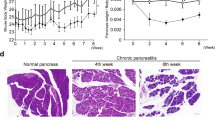Abstract
Objective
This study aimed to explore the existence of small extracellular vesicles (sEVs) in peri-urethral tissues and the role of abnormal expression of sEVs in the pathogenesis of female stress urinary incontinence (SUI).
Methods
sEVs were extracted from peri-urethral vaginal wall tissues using differential centrifugation and were observed by transmission electron microscopy (TEM). The number of sEVs and their protein contents were compared between SUI and control groups using nanoparticle tracking analysis (NTA) and bicinchoninic acid (BCA) protein assay. Fibroblasts were cultured separately with SUI (SsEVs group) and normal tissue sEVs (NsEVs group). Proliferation and migration of fibroblasts were compared between groups using CCK-8 and wound healing assays, respectively. Expression levels of collagen I and III were compared among blank control (BC), NsEVs, and SsEVs groups using real-time PCR. Protein mass spectrometry was used to test the differentially expressed proteins contained in sEVs between groups.
Results
sEVs were extracted and found under the electron microscope. There were significantly more sEVs extracted from the SUI group compared to the normal group. Fibroblasts showed increased proliferative and decreased migratory abilities, and expressed more collagen in the SsEVs group compared to the NsEVs and BC groups. Protein spectrum analysis demonstrated several differentially expressed targets, including components of microfibrils, elastin polymer, and anti-inflammatory factors.
Conclusion
sEVs were detected in the peri-urethral tissues. SUI tissues expressed more sEVs than control. The abnormal expression of sEVs and their protein contents may contribute to the pathogenesis and progression of SUI.
Similar content being viewed by others
References
Abrams P, Cardozo L, Fall M, et al. The standardisation of terminology in lower urinary tract function: report from the standardisation sub-committee of the International Continence Society. Urology, 2003,61(1):37–49
Minassian VA, Drutz HP, Al-Badr A. Urinary incontinence as a worldwide problem. Int J Gynaecol Obstet, 2003,82(3):327–338
Hampel C, Artibani W, Espuña Pons M, et al. Understanding the burden of stress urinary incontinence in Europe: a qualitative review of the literature. Eur Urol, 2004,46(1):15–27
Bhattarai A, Staat M. Modelling of Soft Connective Tissues to Investigate Female Pelvic Floor Dysfunctions. Comput Math Methods Med, 2018,2018:9518076
Smith AL. Female Pelvic Floor: Function, Dysfunction and Management According to the Integral Theory. Clc, 2011,107(3):495–495
Han L, Wang L, Wang Q, et al. Association between pelvic organ prolapse and stress urinary incontinence with collagen. Exp Ther Med, 2014,7(5):1337–1341
Huang L, Zhao Z, Wen J, et al. Cellular senescence: A pathogenic mechanism of pelvic organ prolapse. Mol Med Rep, 2020,22(3):2155–2162
Yin Y, Han Y, Shi C, et al. IGF-1 regulates the growth of fibroblasts and extracellular matrix deposition in pelvic organ prolapse. Open Med, 2020,15(1):833–840
Li Q, Li B, Liu C, et al. Protective role of Nrf2 against mechanical-stretch-induced apoptosis in mouse fibroblasts: a potential therapeutic target of mechanicaltrauma-induced stress urinary incontinence. Int Urogynecol J, 2018,29(10):1469–1477
Maas SLN, Breakefield XO, Weaver AM. Extracellular Vesicles: Unique Intercellular Delivery Vehicles. Trends Cell Biol, 2017,27(3):172–188
Tkach M, Théry C. Communication by Extracellular Vesicles: Where We Are and Where We Need to Go. Cell, 2016,164(6):1226–1232
Doyle LM, Wang MZ. Overview of Extracellular Vesicles, Their Origin, Composition, Purpose, and Methods for Exosome Isolation and Analysis. Cells, 2019,8(7):727
Rilla K, Mustonen AM, Arasu UT, et al. Extracellular vesicles are integral and functional components of the extracellular matrix. Matrix Biol, 2019,75–76:201–219
Cardoso RMS, Rodrigues SC, Gomes CF, et al. Development of an optimized and scalable method for isolation of umbilical cord blood-derived small extracellular vesicles for future clinical use. Stem Cells Transl Med, 2021,10(6):910–921
Zhang J, Fu B, Li M, et al. Secretome of Activated Fibroblasts Induced by Exosomes for the Discovery of Biomarkers in Non-Small Cell Lung Cancer. Small, 2021,17(4):e2004750
Chen N, Du B, Zhou H, et al. Abnormal expression of Nrf2 may play an important role in the pathogenesis and development of adenomyosis. PLoS One, 2017,12(8):e0182773
Zhu L, Lang J, Liu C, et al. The epidemiological study of women with urinary incontinence and risk factors for stress urinary incontinence in China. Menopause, 2009,16(4):831–836
Morling JR, McAllister DA, Agur W, et al. Adverse events after first, single, mesh and non-mesh surgical procedures for stress urinary incontinence and pelvic organ prolapse in Scotland, 1997–2016: a population-based cohort study. Lancet, 2017,389(10069):629–640
Cody JD, Jacobs ML, Richardson K, et al. Oestrogen therapy for urinary incontinence in postmenopausal women. Cochrane Database Syst Rev, 2012,10(10):CD001405
Chen HY, Lin YN, Chen YH, et al. Stress urinary incontinence following vaginal trauma involves remodeling of urethral connective tissue in female mice. Eur J Obstet Gynecol Reprod Biol, 2012,163(2):224–229
Liu X, Wang S, Wu S, et al. Exosomes secreted by adipose-derived mesenchymal stem cells regulate type I collagen metabolism in fibroblasts from women with stress urinary incontinence. Stem Cell Res Ther, 2018,9(1):159
Wei A, Wang R, Wei K, et al. LncRNA and mRNA Expression Profiling in the Periurethral Vaginal Wall Tissues of Postmenopausal Women with Stress Urinary Incontinence. Reprod Sci, 2020,27(7):1490–1501
Edgar S, Hopley B, Genovese L, et al. Effects of collagen-derived bioactive peptides and natural antioxidant compounds on proliferation and matrix protein synthesis by cultured normal human dermal fibroblasts. Sci Rep, 2018,8(1):10474
Tracy LE, Minasian RA, Caterson EJ. Extracellular Matrix and Dermal Fibroblast Function in the Healing Wound. Adv Wound Care, 2016,5(3):119–136
Lawson C, Kovacs D, Finding E, et al. Extracellular Vesicles: Evolutionarily Conserved Mediators of Intercellular Communication. Yale J Biol Med, 2017,90(3):481–491
Desdín-Micó G, Mittelbrunn M. Role of exosomes in the protection of cellular homeostasis. Cell Adh Migr, 2017,11(2):127–134
Author information
Authors and Affiliations
Corresponding author
Ethics declarations
The authors declare that they have no competing interests.
Additional information
This research was supported by the Natural Science Foundation of Zhejiang Province (Nos. LQ22H040003 and LQ20H270019), and Medical Science and Technology Project of Zhejiang Province (No. 2021KY767).
Rights and permissions
About this article
Cite this article
Chen, N., Sun, Xy., Ding, Zc. et al. Small Extracellular Vesicles Secreted by Peri-urethral Tissues Regulate Fibroblast Function and Contribute to the Pathogenesis of Female Stress Urinary Incontinence. CURR MED SCI 43, 803–810 (2023). https://doi.org/10.1007/s11596-023-2737-2
Received:
Accepted:
Published:
Issue Date:
DOI: https://doi.org/10.1007/s11596-023-2737-2




